



Table of Contents
- Introduction
- What Are Gusset Plates?
- Materials Used in Gusset Plates
- Design Considerations for Gusset Plates
- Applications of Gusset Plates
- Preventative Measures and Best Practices
- Manufacturing and Installation of Gusset Plates
- Advantages of Using Gusset Plates
- Challenges and Limitations
- Future Trends in Gusset Plate Design
- Conclusion
- Faq's
Introduction
Gusset plates are fundamental components in structural engineering, serving as critical connectors that ensure the stability and integrity of various constructions. These plates are pivotal in joining beams, columns, and other structural members, effectively distributing loads and reinforcing joints. This comprehensive article delves into the intricacies of gusset plates, exploring their materials, design considerations, applications, and the paramount importance of adhering to design standards to prevent structural failures.
What Are Gusset Plates?
Gusset plates are flat metal plates, typically triangular or rectangular, used in construction to connect structural members in frameworks such as trusses, bridges, and buildings. These plates play a critical role in load distribution, ensuring that stress is evenly spread across multiple components rather than being concentrated at a single point. By reinforcing joints, gusset plates enhance structural integrity, preventing deformations and failures that could compromise the overall stability of a structure.
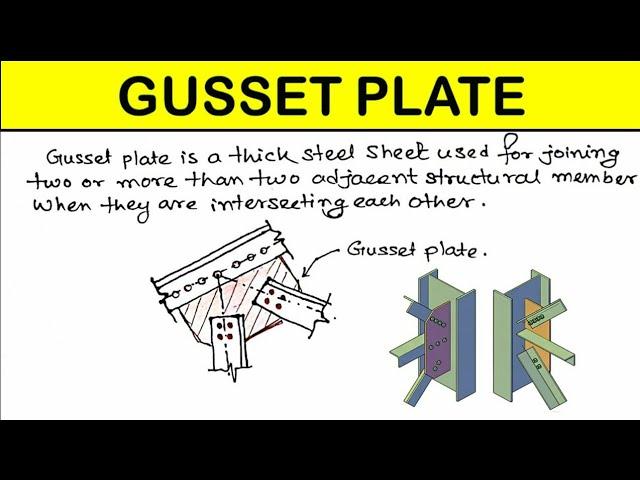 Gusset Plate, Youtube
Gusset Plate, Youtube
In steel and metal frame construction, gusset plates are widely used in beam-to-column connections, roof trusses, and bridge frameworks. Their design, thickness, and material composition depend on the load they need to support. Properly engineered gusset plates not only strengthen the framework but also increase the durability and lifespan of the structure, making them essential in both small-scale buildings and large infrastructure projects.
Also Read: Cedar Wood for Construction and Furniture: Benefits You Can't Ignore
Materials Used in Gusset Plates
The choice of material for gusset plates is crucial, as it directly impacts the durability and performance of the structure. Different materials are used based on factors like load requirements, environmental exposure, and compatibility with structural components.
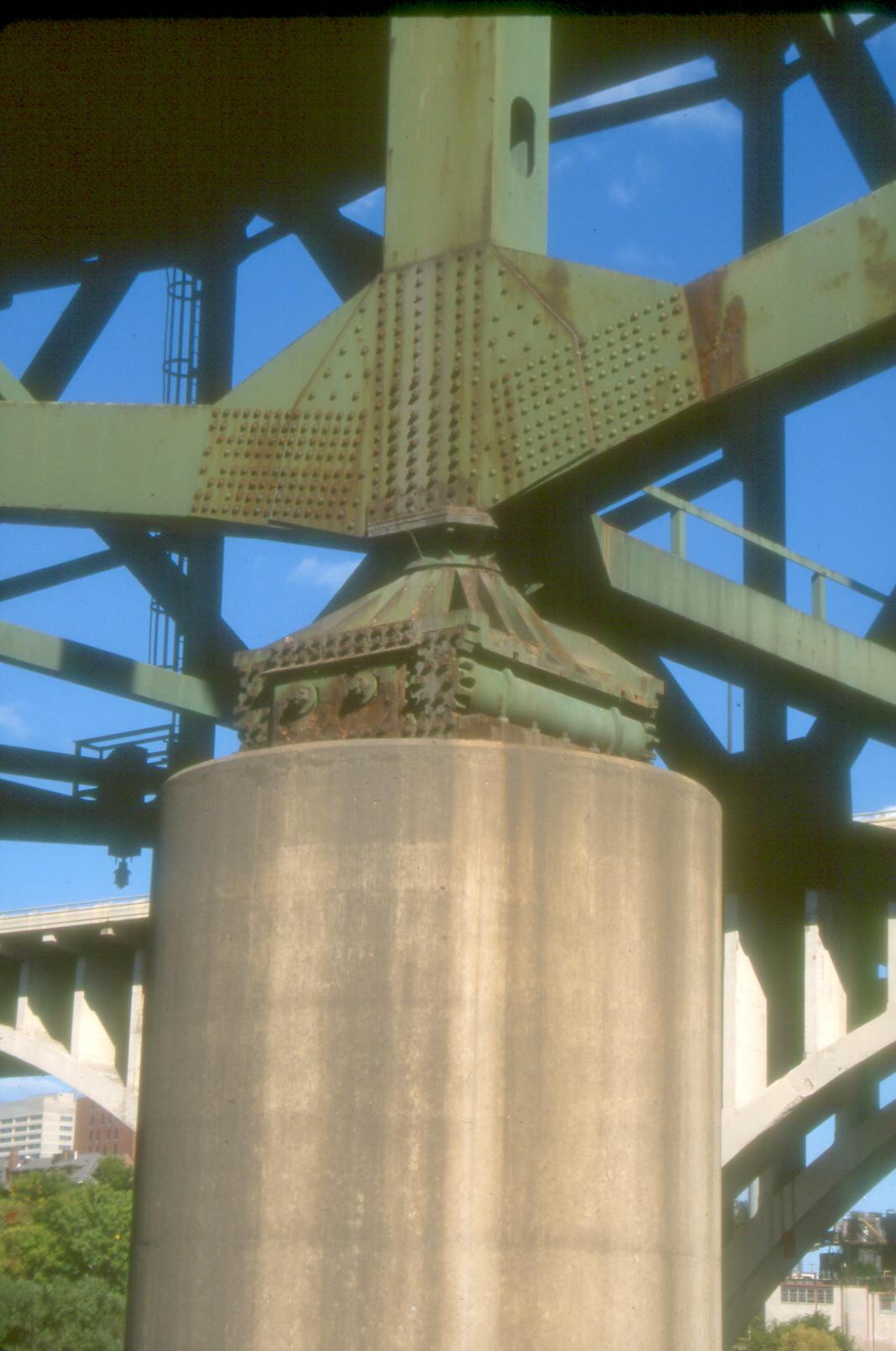 Materials used in Gusset Plates, Wiki
Materials used in Gusset Plates, Wiki
- Steel: Steel is the most commonly used material for gusset plates due to its high strength and cost-effectiveness. It is widely applied in heavy-load structures like bridges, multi-story buildings, and industrial frameworks. Steel gusset plates provide excellent support under both tension and compression forces, ensuring long-term structural stability.
- Stainless Steel: Stainless steel gusset plates offer superior corrosion resistance, making them suitable for structures exposed to harsh environments, such as coastal buildings, chemical plants, and outdoor frameworks. While more expensive than regular steel, stainless steel requires less maintenance and extends the lifespan of the structure by preventing rust and degradation.
- Aluminum: Aluminum gusset plates are valued for their lightweight nature and corrosion resistance. They are commonly used in applications where reducing the overall structure's weight is critical, such as aircraft frameworks, transportation structures, and lightweight architectural designs. Although not as strong as steel, aluminum provides a good balance between strength and weight efficiency.
- Copper: Copper gusset plates are less commonly used but can be found in specialized applications, particularly in structures requiring both durability and aesthetic appeal. Copper naturally resists corrosion and develops a protective patina over time, making it useful for historical buildings, artistic constructions, and conductive applications where electrical grounding is necessary.
The selection of gusset plate material depends on the project's structural demands, environmental exposure, and long-term maintenance requirements. Proper material choice ensures safety, durability, and efficiency in construction.
Design Considerations for Gusset Plates
Designing gusset plates involves meticulous attention to various factors to ensure they perform effectively under expected loads. Key considerations include:
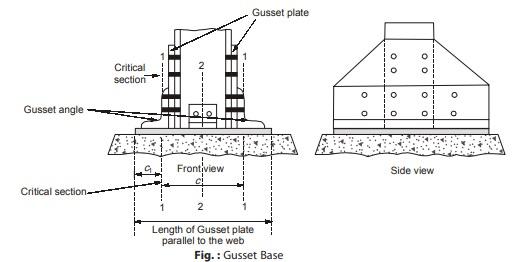 Design considerations for Gusset Plates, Study Material
Design considerations for Gusset Plates, Study Material
1. Load Analysis
Understanding the types and magnitudes of forces (tensile, compressive, and shear) that the gusset plate will encounter is fundamental. Accurate load analysis ensures the plate can withstand operational stresses without failure.
2. Plate Thickness and Size
The dimensions of the gusset plate must be adequate to handle the calculated stresses. An undersized or overly thin plate may lead to buckling or fracture under load.
3. Connection Methods
Gusset plates can be connected to structural members using bolts, rivets, or welding:
- Bolting: Allows for disassembly and is commonly used in structures requiring future modifications.
- Riveting: Once prevalent, now less common due to labor-intensive installation.
- Welding: Provides a rigid connection but requires careful execution to avoid introducing weaknesses.
The choice of connection method affects the overall behavior of the joint and must align with design requirements.
4. Edge Distance and Spacing
Proper spacing of bolts or rivets and adequate edge distances are essential to prevent tearing or shearing of the plate material.
5. Buckling Prevention
In compression members, gusset plates must be designed to prevent buckling. This may involve adding stiffeners or increasing plate thickness.
6. Compliance with Design Standards
Adherence to established design codes and standards, such as those provided by the American Institute of Steel Construction (AISC) or Eurocode 3, ensures safety and reliability. These standards offer guidelines on material selection, load calculations, and connection detailing.
Also Read: Curing Compounds in Construction: Why They Matter for Quality Concrete Work
Applications of Gusset Plates
Gusset plates play a crucial role in various structural applications, ensuring stability, strength, and proper load distribution. They are widely used in bridges, buildings, towers, and industrial frameworks, where they help reinforce connections between structural members. Below are some key applications of gusset plates in construction and engineering.
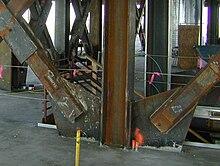 Applications of Gusset Plates, Wiki
Applications of Gusset Plates, Wiki
1. Bridges
Gusset plates are essential components in bridge construction, particularly in truss bridges where multiple members meet at a single joint. They connect beams, girders, and trusses, distributing loads evenly and preventing localized stress points. Gusset plates in bridges must be precisely designed and tested to withstand dynamic forces from vehicles, wind, and environmental conditions. Their strength and durability are critical for maintaining structural integrity over long spans. Additionally, gusset plates in movable or suspension bridges help in load-bearing mechanisms by securing cables, beams, and deck sections.
2. Buildings
In steel-framed buildings, gusset plates are commonly used to connect beams, columns, and braces, ensuring stability and structural strength. They provide additional reinforcement in joints, particularly in high-rise buildings where wind and seismic forces must be accounted for. Gusset plates also facilitate load transfer between different sections of a building, reducing stress concentration at a single point. Their use in earthquake-resistant buildings is crucial, as they allow for some flexibility while maintaining structural rigidity, preventing collapse during seismic activity. Furthermore, gusset plates are frequently used in roof trusses and mezzanine structures, supporting overhead loads in large halls, warehouses, and industrial facilities.
3. Towers and Masts
In transmission towers, radio masts, and communication towers, gusset plates are used to join diagonal, vertical, and horizontal members, creating a strong and stable framework. These structures require gusset plates that can withstand high wind loads, vibrations, and environmental wear. Because of their tall and slender design, towers rely on well-placed gusset plates to reinforce critical connections and prevent structural instability. Additionally, gusset plates in lattice tower designs improve load distribution, reducing the risk of buckling or structural failure over time.
4. Industrial Frameworks
Gusset plates are widely used in industrial structures, including factories, warehouses, refineries, and heavy machinery frameworks. In these settings, they provide reinforcement for joints and support heavy loads from overhead cranes, conveyor systems, and large equipment. Gusset plates are essential in steel manufacturing plants, power stations, and processing facilities, where constant vibrations, thermal expansion, and heavy mechanical forces put stress on the structure. Additionally, in petrochemical and chemical plants, gusset plates made from corrosion-resistant materials are used to maintain structural durability in extreme conditions.
Preventative Measures and Best Practices
To mitigate the risk of gusset plate failures, it is essential to follow industry best practices and implement proper safety measures. The longevity and performance of gusset plates depend on regular inspections, correct material selection, adherence to design standards, and protective treatments. Below are key preventative measures explained in detail.
- Regular Inspections: Routine examination of gusset plates is crucial to identify early signs of wear, corrosion, deformation, or stress fractures. Structural failures often result from small defects that go unnoticed, so scheduled inspections using visual assessments, ultrasonic testing, and X-ray imaging can help detect problems before they escalate. Bridges, high-rise buildings, and industrial structures should have periodic inspections, particularly in areas where gusset plates experience high loads or exposure to extreme weather conditions.
- Adherence to Design Standards: Following engineering standards and building codes ensures gusset plates are designed to handle expected loads, environmental conditions, and stress factors. Guidelines from organizations like the American Institute of Steel Construction (AISC), Eurocode 3, and Indian Standard IS 800 provide specifications on material strength, load-bearing capacity, bolt spacing, and welding procedures. Engineers and fabricators must adhere to these standards to avoid under-designed or improperly sized gusset plates, which can lead to catastrophic failures.
- Material Selection: The choice of material plays a significant role in gusset plate performance. Steel, stainless steel, aluminum, and copper are common options, but selection depends on structural requirements and environmental conditions. For example, stainless steel and galvanized steel are preferred in marine or chemical environments due to their corrosion resistance, while high-strength steel plates are required for heavy-load bridges and high-rise buildings. Proper material selection reduces the risk of rusting, cracking, and premature failure over time.
- Proper Installation Techniques: Ensuring that gusset plates are installed using the correct bolting, riveting, or welding methods is essential for joint stability. Improperly installed connections can weaken the structure, leading to shear failure, fatigue cracking, or excessive deflection. Welded connections must be free from defects like porosity or weak fusion, while bolted joints must have the correct torque and spacing to prevent slippage or stress concentration. Skilled labor and quality control measures are necessary to maintain installation accuracy.
- Load Testing: Conducting load tests on gusset plates and structural assemblies verifies their ability to withstand expected tensile, compressive, and shear forces before full-scale operation. Load testing methods such as static testing, fatigue testing, and stress analysis can help identify weak points in gusset plate design. Bridges, industrial frameworks, and high-rise buildings benefit from pre-installation load simulations, ensuring that gusset plates meet safety requirements and do not experience unexpected failures under operational conditions.
- Environmental Protection: Gusset plates are vulnerable to corrosion, moisture, and chemical exposure, which can weaken structural joints over time. Applying protective coatings, galvanization, or corrosion-resistant treatments extends the lifespan of gusset plates, particularly in harsh climates. Techniques like hot-dip galvanization, epoxy coatings, and powder coating create a protective barrier against moisture and pollutants. In marine, coastal, and industrial environments, using weather-resistant alloys or stainless steel further enhances durability.
Also Read: Retaining Walls: A Complete Guide to Design, Construction, and Costs
Manufacturing and Installation of Gusset Plates
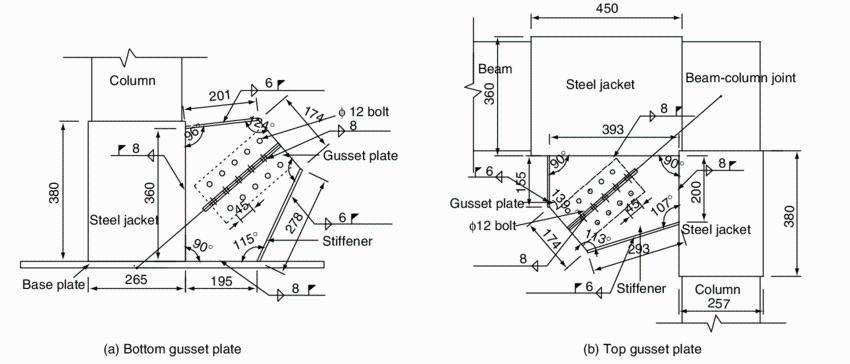 Gusset Plates Installation, ResearchGate
Gusset Plates Installation, ResearchGate
1. Fabrication Process
Gusset plates are typically manufactured using precise cutting, punching, and forming techniques. The common fabrication processes include:
- Laser Cutting: Provides high accuracy and is used for complex designs.
- Plasma Cutting: Suitable for thick plates, offering a balance between cost and precision.
- Water Jet Cutting: Used for cutting materials without heat-affected zones.
- CNC Machining: Ensures precision in drilling and shaping.
After cutting, gusset plates may undergo surface treatment such as galvanization, painting, or powder coating to enhance durability.
2. Installation Methods
The installation of gusset plates depends on the type of structure and connection requirements:
- Bolted Connections: Pre-drilled holes align with bolts, allowing for easy assembly and disassembly.
- Riveted Connections: Once common in bridges, riveted gusset plates are now mainly found in older structures.
- Welded Connections: Welding provides rigid, permanent connections but requires careful quality control to prevent defects.
Ensuring that installation follows the design specifications is crucial for maintaining structural integrity.
Advantages of Using Gusset Plates
- Enhanced Structural Strength: Distributes forces effectively, preventing localized stress concentrations.
- Flexibility in Design: Available in various shapes and sizes, gusset plates accommodate different structural configurations.
- Ease of Installation: Can be bolted or welded, allowing for efficient assembly.
- Cost-Effective Reinforcement: Strengthens joints without requiring additional heavy materials.
- Long-Term Durability: When properly designed and maintained, gusset plates provide lasting support for structures.
Challenges and Limitations
Despite their benefits, gusset plates have certain limitations:
- Corrosion Risk: Exposure to moisture and chemicals can degrade gusset plates, requiring protective coatings.
- Inspection and Maintenance: Requires periodic assessments to detect potential weakening over time.
- Complex Load Calculations: Properly designing gusset plates demands precise engineering analysis to avoid under or overdesign.
Future Trends in Gusset Plate Design
Advancements in engineering, material science, and digital technology are shaping the future of gusset plate design, making them stronger, more efficient, and easier to monitor. Innovations in high-strength alloys, advanced manufacturing, real-time monitoring, and AI-driven optimization are expected to improve the safety, durability, and performance of gusset plates in modern construction.
- High-Strength Alloys: The development of stronger and lighter materials is transforming gusset plate applications. High-strength steel alloys, carbon fiber-reinforced composites, and advanced aluminum alloys offer better load-bearing capacity with reduced weight, making structures more efficient and cost-effective. These materials are particularly beneficial in high-rise buildings, long-span bridges, and aerospace structures, where weight reduction is crucial. Additionally, self-healing materials are being explored, which could repair minor cracks or damage, extending the lifespan of gusset plates.
- Advanced Manufacturing Techniques: New fabrication methods, such as 3D printing, CNC machining, and laser cutting, are revolutionizing gusset plate production. 3D printing with metal alloys allows for the creation of customized, complex gusset plates that optimize material usage while maintaining strength. These advancements help engineers design gusset plates that are lighter, stronger, and more adaptable to specific structural needs. Additionally, robotic welding and automated bolting ensure precision and consistency in gusset plate installation, reducing errors and enhancing structural integrity.
- Structural Health Monitoring (SHM): The integration of smart sensors into gusset plates is an emerging trend in structural engineering. Embedded sensors and IoT technology can provide real-time data on stress, temperature, load distribution, and potential failures. This allows engineers to monitor the structural health of bridges, buildings, and towers remotely. By using wireless monitoring systems, maintenance teams can detect early signs of fatigue, corrosion, or stress concentration, preventing unexpected failures and reducing maintenance costs. This is particularly useful in critical infrastructure projects like bridges and high-rise buildings, where regular physical inspections may be challenging.
- AI-Assisted Design: Artificial intelligence is playing a growing role in optimizing gusset plate designs for maximum efficiency. Machine learning algorithms analyze structural data, load patterns, and stress factors to generate gusset plates that provide optimal support with minimal material usage. AI-driven finite element analysis (FEA) helps engineers simulate stress conditions and predict failure points, allowing for safer and more cost-effective designs. AI-assisted gusset plate design is expected to lead to more sustainable construction practices, reducing material waste and improving energy efficiency in manufacturing.
Conclusion
Gusset plates play a crucial role in ensuring the stability and strength of various structures, including bridges, buildings, and industrial frameworks. Proper material selection, design considerations, and adherence to engineering standards are essential to prevent failures and enhance longevity. As technology advances, improvements in materials, fabrication, and monitoring techniques will further refine gusset plate applications, making them even more reliable in modern construction.
explore further
Latest from Editorials
More from Publications
Resources
Dwello, for every home buyer, is a way to go from 'I feel' to 'I know', at no extra cost.



